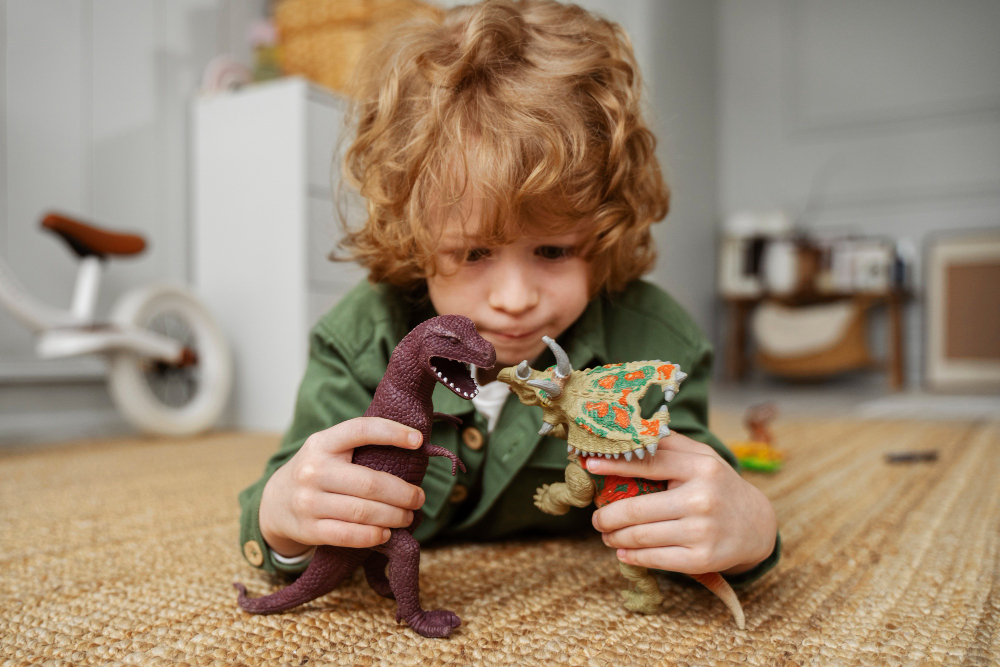
Craft toys for Kids not only provide entertainment but also promote cognitive development, fine motor skills, and self-expression in children. They offer a creative and engaging way for children to express themselves, develop their skills, and have fun. These toys come in various forms, from DIY craft kits to building sets and art supplies, and they encourage children to use their imagination and creativity to create something unique. Craft toys for kids offer a wide range of benefits for children’s learning, development, and well-being. By providing opportunities for creativity, fine motor skills, problem-solving, and communication, craft toys enrich children’s lives and foster a love of learning and exploration. When selecting craft toys, consider factors such as age appropriateness, interests, safety, and educational value to ensure a positive and rewarding experience.
Types of Craft Toys
-
DIY Craft Kits: DIY craft kits come with all the materials and instructions needed for children to create their own projects, such as jewellery, pottery, or painting. These kits often include pre-cut pieces, adhesive, and decorative elements to spark creativity and inspire kids to explore different crafting techniques.
-
Building Sets: Building sets, such as LEGO or magnetic tiles, allow children to construct objects and structures using interlocking pieces. These sets promote spatial awareness, problem-solving skills, and hand-eye coordination as children design and build their creations.
-
Art Supplies: Art supplies, such as crayons, markers, paint, and modelling clay, provide children with the tools they need to express themselves through drawing, painting, and sculpting. These supplies encourage experimentation, creativity, and sensory exploration as children explore different mediums and techniques.
-
Sewing and Knitting Kits: Sewing and knitting kits introduce children to basic sewing and knitting techniques, allowing them to create their own clothing, accessories, or stuffed animals. These kits help develop fine motor skills, patience, and perseverance as children learn to follow patterns and work with textiles.
-
Science and STEM Kits: Science and STEM kits combine education with hands-on experimentation, allowing children to explore scientific concepts through interactive activities and experiments. These kits cover a wide range of topics, from chemistry and physics to robotics and coding, and encourage critical thinking, problem-solving, and curiosity.
Benefits of Craft Toys
-
Creativity: Craft toys for Kids stimulate children’s imagination and creativity by allowing them to design, build, and customize their own projects. Whether they’re painting a picture, building a sculpture, or sewing a costume, craft toys provide endless opportunities for self-expression and artistic exploration.
-
Fine Motor Skills: Craft activities help children develop fine motor skills and hand-eye coordination as they manipulate small objects, use tools, and perform precise movements. Cutting, glueing, and drawing all require control and dexterity, which are important for tasks such as writing and tying shoelaces.
-
Problem-Solving Skills: Craft toys encourage children to think critically and solve problems as they plan and execute their projects. Whether they’re figuring out how to assemble a puzzle, follow a pattern, or troubleshoot a design, children learn to overcome challenges and find creative solutions to problems.
-
Self-Esteem: Completing a craft project provides children with a sense of accomplishment and pride in their abilities. As they see their ideas come to life and receive positive feedback from others, children gain confidence in their creative skills and develop a positive self-image.
-
Bonding and Communication: Craft activities offer opportunities for children to bond with family members, friends, and peers as they collaborate, share ideas, and work together on projects. Crafting promotes communication, cooperation, and teamwork as children express their thoughts, listen to others, and collaborate to achieve common goals.
Choosing the Right Craft Toys
When selecting craft toys for kids, consider the following factors to ensure an enjoyable and beneficial experience:
-
Age Appropriateness: Choose craft toys that are suitable for the child’s age and developmental stage. Look for age recommendations on the packaging or consider the complexity of the activity and the child’s abilities.
-
Interests and Preferences: Take into account the child’s interests, hobbies, and preferences when selecting craft toys. Whether they enjoy painting, building, or experimenting with science, choose toys that align with their interests to keep them engaged and motivated.
-
Safety: Prioritize safety when choosing craft toys for children. Ensure that materials are non-toxic, durable, and free from small parts that could pose a choking hazard. Supervise young children during craft activities and provide appropriate safety gear when necessary.
-
Educational Value: Look for craft toys that offer educational benefits beyond just entertainment. Consider toys that promote learning in areas such as fine motor skills, creativity, problem-solving, and STEM concepts to provide a well-rounded learning experience.
-
Open-Ended Play: Choose craft toys that allow for open-ended play and creativity rather than ones with predetermined outcomes or instructions. Toys that encourage experimentation, exploration, and personalization foster a child’s sense of autonomy and creativity.
Incorporating Craft Toys into Daily Routine
Integrating craft toys into a child’s daily routine can enhance their learning and development in various ways:
-
Designated Craft Time: Set aside dedicated time each day or week for craft activities, allowing children to explore different materials, techniques, and projects at their own pace.
-
Themed Projects: Choose craft projects that tie into themes or topics of interest, such as holidays, seasons, or favourite characters, to make learning more meaningful and engaging.
-
Family Bonding: Use craft time as an opportunity for family bonding and quality time together. Involve parents, siblings, or other family members in crafting activities to promote communication, cooperation, and shared experiences.
-
Learning Extensions: Extend learning beyond craft time by incorporating discussions, observations, and reflections on the creative process. Encourage children to talk about their ideas, choices, and discoveries during and after completing a craft project.
-
Display and Celebrate: Display children’s artwork and craft projects proudly to celebrate their achievements and boost their confidence. Create a gallery wall, showcase projects on shelves or bulletin boards, or share photos with friends and family to recognize and appreciate children’s creativity.
Conclusion
In conclusion, craft toys for kids provide a valuable outlet for creativity, self-expression, and skill development. Whether children are painting, building, sewing, or experimenting with science, craft toys offer endless possibilities for learning and exploration. By engaging in hands-on activities, children develop important skills such as creativity, fine motor skills, problem-solving, and communication, while also fostering a sense of accomplishment and self-esteem. Craft toys are not only fun and entertaining but also educational and beneficial for children’s overall development and well-being.







